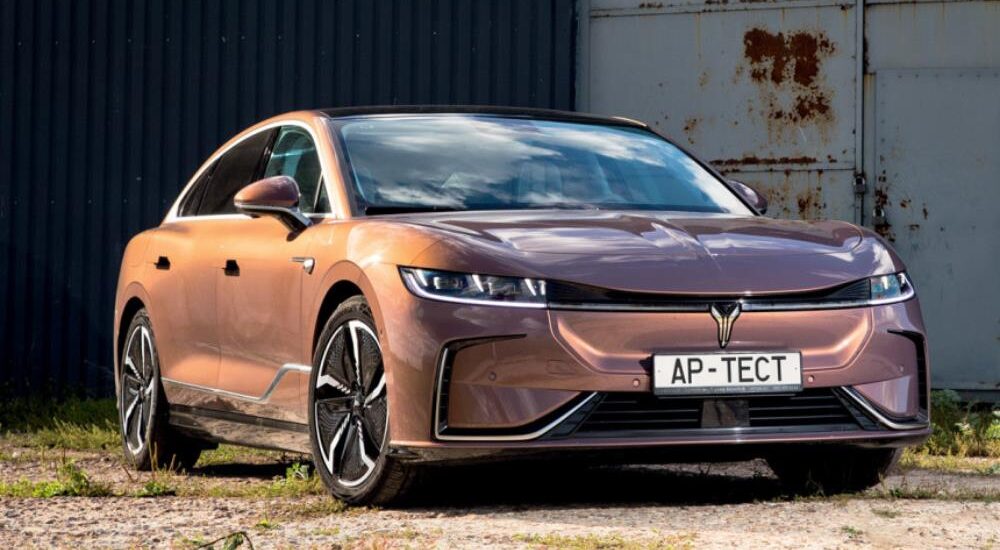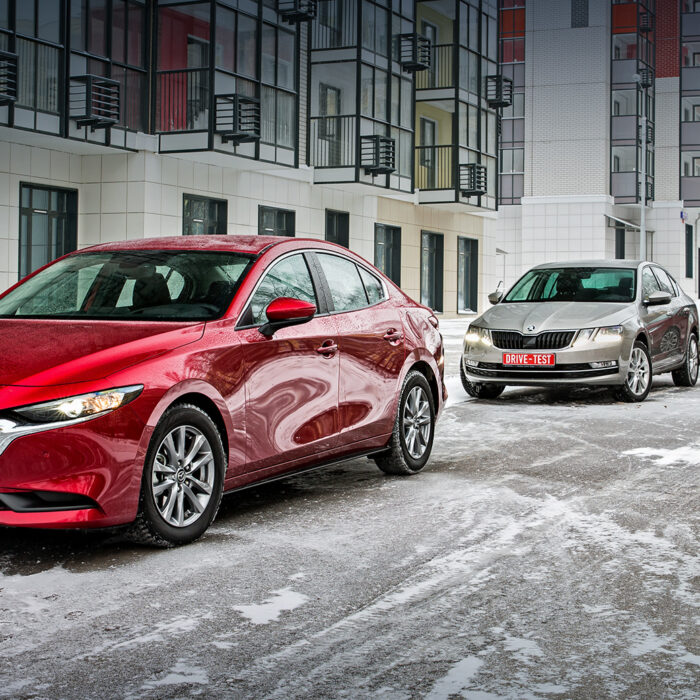Вращая овальный ключ-транспондер в руке, я задаюсь вопросом: возможно, это второй ключ, быть может, служебный? Он легкий, пластиковый, с неудобными кнопками на краях, которые иногда бывают трудно нажимать. Однако, как только я оказываюсь в салоне, моее первоначальное раздражение превращается в настоящее восхищение. Передо мной простирается динамометрическая трасса на испытательной площадке, где Voyah Passion собирается раскрыть свою страсть!
Voyah, китайская марка, созданная три года назад конгломератом Дунфэн, на постоянной основе отмечает свое присутствие на российском рынке с новой линейкой электрифицированных автомобилей. К лету 2023 года Voyah Free и минивэн Voyah Dreamer стали самыми популярными электрическими автомобилями в России, где было продано 1989 единиц всего за восемь месяцев. Несмотря на высокий спрос в их родной стране, Китае (20 тысяч единиц), Россия занимает одно из главных экспортных направлений, в то время как в Израиле было продано всего 118 автомобилей Voyah и примерно такое же количество в Норвегии. Продажи только начались в Турции, что свидетельствует о приоритетности российского рынка для этой китайской марки, даже с точки зрения адаптации и русификации.
Седан Voyah Passion – это третья модель от Voyah. В родной стране он носит имя 追光, что в переводе с китайского означает “гоняющийся за светом”. И хотя это звучит романтично, произношение “zhui guang” может и не сработать как клиенто-привлекающий фактор. К счастью, для международных поставок автомобиль был назван Voyah Passion. Соответствуя своему английскому имени, дизайн этой машины действительно является проектом с душой. Известные художники из студии Italdesign внесли свой вклад в создание его образа. Плавные линии определяют форму кузова, который, с точки зрения пропорций, больше напоминает лифтбек, хотя технически это седан.

Что касается деталей, мастерство в каждой из них впечатляет, и это заметно даже в зазорах между панелями. Потрясающий бронзовый лак создает эффект хамелеона под солнечными лучами. Нет необходимости углубляться в технологии освещения, так как даже бюджетные китайские автомобили сегодня предлагают продвинутую оптику. Passion не стал исключением и укомплектован подсвеченными логотипами, светодиодными полосами, простирающимися от уха к уху, и динамическими указателями поворота. С помощью меню можно выбрать один из трех сценариев приветствия с использованием светодиодов при разблокировке автомобиля. Однако любопытно, что на выдвижных ручках дверей нет сенсоров бесключевого доступа – и это на автомобиле стоимостью 8,5 миллиона рублей.

Выдвижные ручки дверей — со встроенной подсветкой
Внутри центральное место занимает эстетика. Помимо пластика, в салоне использован экокожа, алькантара и алюминиевая отделка. Над головой две солнцезащитные шторки, открывая которые, открывается обширная панорамная крыша, со стеклом, простирающимся до подголовников задних сидений. Благодаря этим изысканным штрихам и обильной стеклянной площади, салон кажется ярким даже в пасмурные дни.

На передней панели уместилось сразу четыре экрана. Правый локоть зачастую случайно нажимает «хрустальную» кнопку открывания центрального бокса

В меню предусмотрены комплексные настройки салона. Например, режим Baby Care предполагает закрытие окон и потолочной шторки, уменьшение звука аудиосистемы и вывод обзора задних сидений на центральный дисплей

Салонная камера позволяет наблюдать за детьми на задних сиденьях – и даже записывать видеоролики с их «выступлениями»

На центральный дисплей можно вывести изображения с разных камер или включить режим «прозрачного шасси»
Однако ваше внимание неизбежно привлечет многофункциональное рулевое колесо. Оно не с плоским низом или сжатыми с обеих сторон, а действительно граненое, состоящее из серии слегка изогнутых хорд. Руль чувствуется совсем иначе по сравнению со скоростным управлением, которому научил меня Эрнест Сергеевич Цыганков; здесь руль буквально танцует в ваших руках, когда вы его поворачиваете от упора до упора (что соответствует стандартным 2,7 оборотам)! К счастью, классический захват “без пятнадцати трёх” удобен так же удобен для управления.

Граненый руль — не для быстрого вращения с перехватами
Что касается сенсорного управления для всего, даже студенты уроков Цыганкова могут быть озадачены. Управление климатом осуществляется через планшет, а открывание солнцезащитных штор на потолке – с помощью сенсоров. Даже кнопки для управления электрическими стеклоподъемниками используют тактильное управление, требующее уверенных нажатий; нежные касания не вызывают реакции. Со временем, конечно же, вы привыкаете к этому и приспосабливаетесь, но традиционные физические кнопки зачастую более удобны. В Европе, например, Volkswagen, после экспериментов с сенсорами на руле, возвращается к физическим кнопкам. В то время как Voyah Passion полностью ориентирован на сенсорное управление, вплоть до своего чипа Qualcomm Snapdragon 8155, который служит основой для его операционной системы.
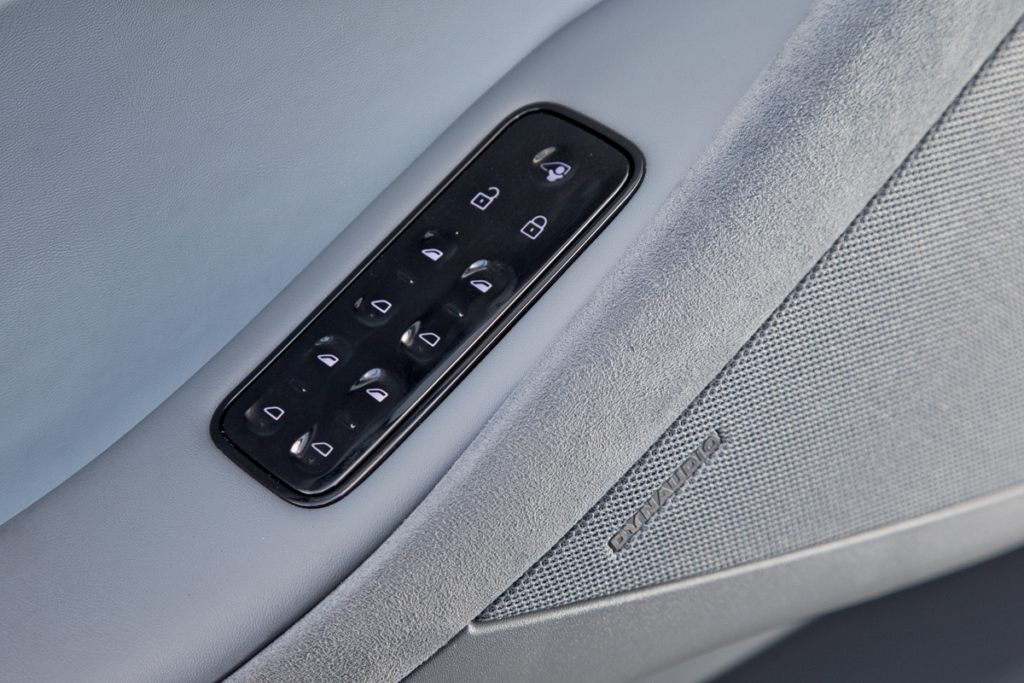
Чтобы частично открыть или закрыть любое из четырех окон, нужно удерживать палец на сенсорной кнопке, в то время как краткое касание достаточно для полного открытия или закрытия
Изобилие настроек может показаться на первых порах ошеломляющим. Некоторые из них доступны через центральный дисплей, а другие – находятся на нижнем планшете, который также управляет четырехзонной системой кондиционирования. Вам также потребуется найти управление подогревом и вентиляцией сидений, а также активацию программы массажа, которая также доступна для задних пассажиров. Однако, к концу третьего дня я уже был достаточно хорошо знаком с меню; основной вызов заключается в том, чтобы избегать прямых солнечных лучей на экране. Стоит отметить, что все меню в настоящее время на английском языке, но ожидается выпуск русской прошивки в ноябре, подобно той, которая доступна для продаваемых сегодня минивэнов Dreamer и кроссоверов Free.
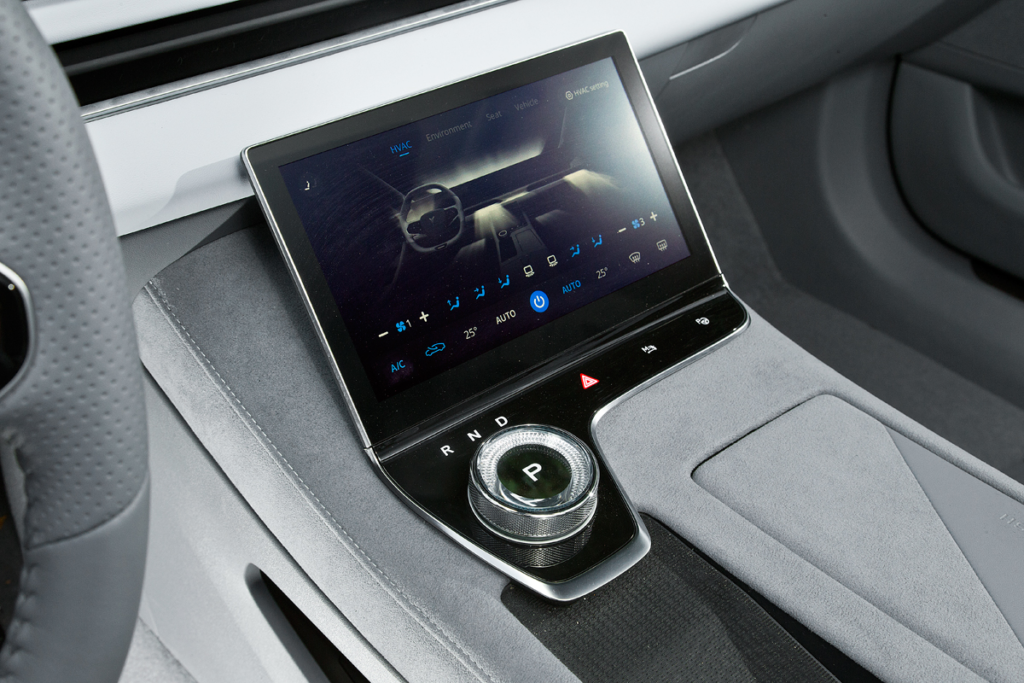
Шайба выбора режимов трансмиссии не напрягает запаздываниями
Выбор режима трансмиссии через регулятор не вызывает задержек, однако даже после русификации Passion не раскроет перед вами всего своего потенциала. Ведь большинство его функций разработаны для использования сети 5G и обязательного привязывания к внутренней китайской учетной записи. Так что для пассажиров в основном это означает любование разноцветными виджетами с китайских веб-сайтов и развлечения с путешествием по меню настроек, которое можно прокручивать тремя пальцами с центрального экрана на экран правого пассажира.

Центр развлечений пассажира – с ограниченным функционалом
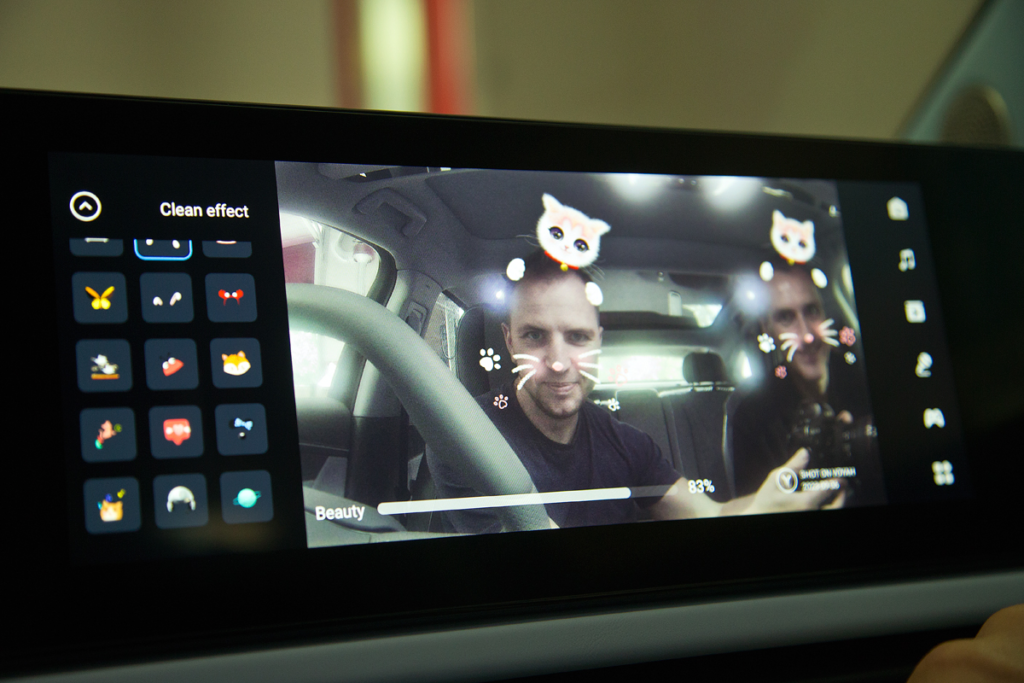
Камеры в салоне позволяют записывать ролики с наложенной анимацией
Для детей наибольшее удовольствие доставляет интерактивный режим камеры – можно записывать видео с забавными анимациями, наложенными на ваше лицо. Будь то пузырьки на голове, уши или забавные кошачьи мордочки… Это может показаться детским садом, но это поднимает настроение даже тем, кому за сорок.
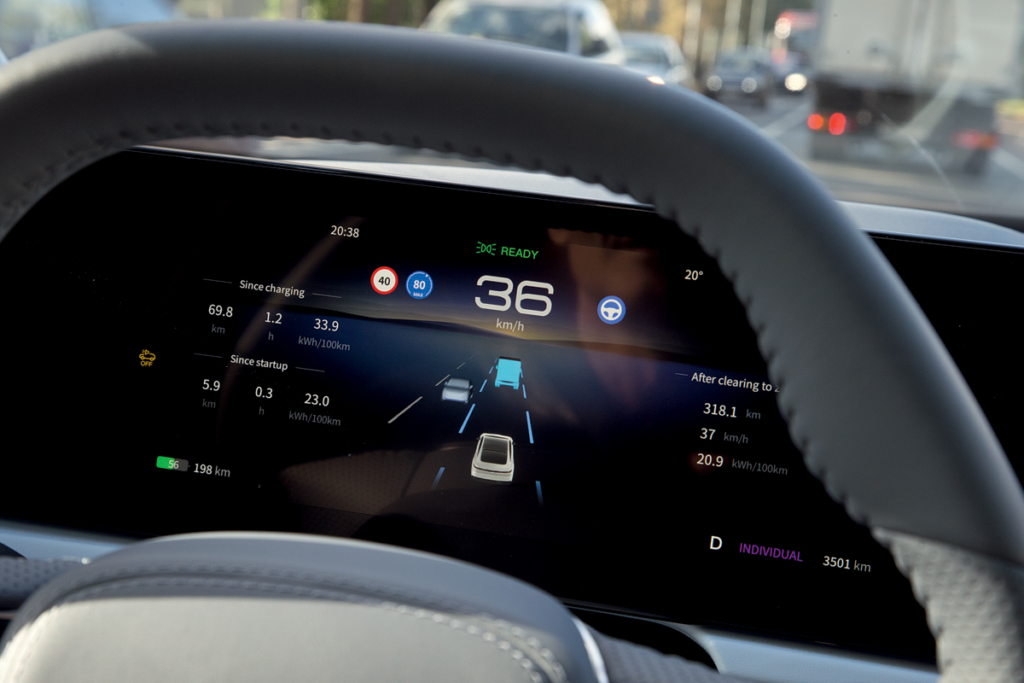
Странно, но Passion предлагает лишь один вариант оформления приборов

На проекционном дисплее – крупные символы. К сожалению, режим навигации с дополненной реальностью в России не работает
Однако важно отметить, что эти развлечения могут создавать угрозу безопасности во время вождения. Веселя пассажиров, они могут отвлечь внимание водителя от дороги. К счастью, Voyah Passion оснащен обширным набором электронных систем помощи водителю, включая помощь в удержании полосы движения, автоматическое торможение и активный круиз-контроль. Особенно эффективно работает активный круиз-контроль. Однако здесь нет режима ограничения скорости.
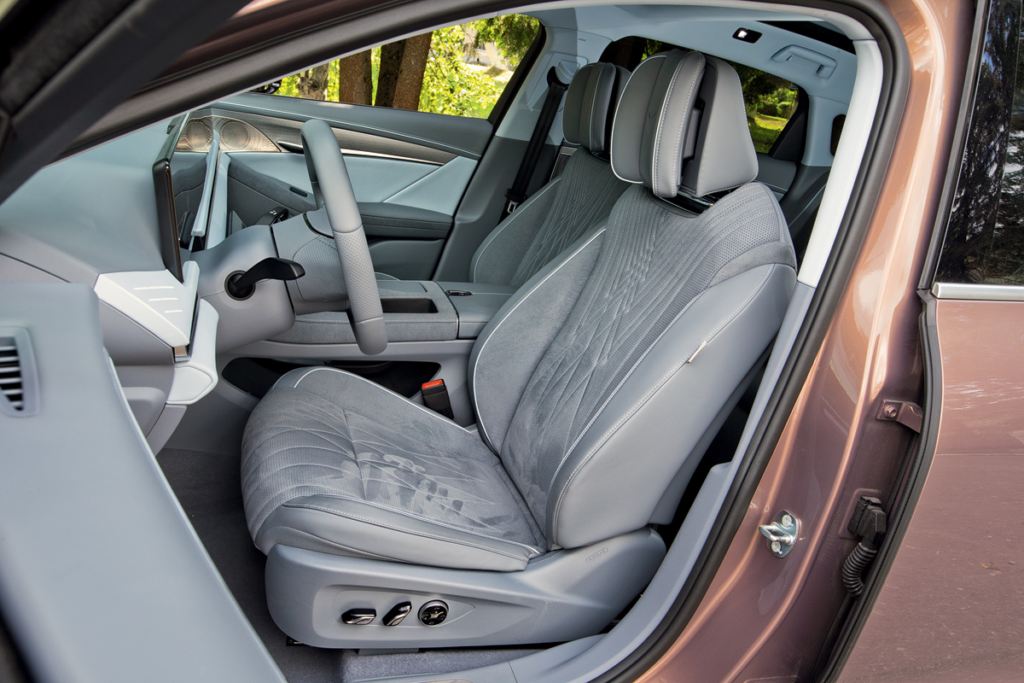
Подушка коротковата, зато кресло оснащено не только обогревом и вентиляцией, но и силовым массажером

У водительского сиденья можно сохранить настройки для вождения, для отдыха – и для чего-то третьего
Вместо этого есть сканер дорожных знаков, который показывает ограничения скорости, знаки о запрещении стоянки и даже предупреждения о дорожных блокадах. Если эти уведомления становятся назойливыми, вы легко можете отключить эту функцию через меню. Voyah предоставляет гибкость в этом отношении. Например, относительно назойливый синтезатор звука, отпугивающий пешеходов на низкой скорости, также можно отключить, а также автоматическую трансляцию с боковой камеры при повороте. У вас есть свобода настроить свои предпочтения, но при покупке автомобиля рекомендуется учесть весь пакет.

На втором ряду просторно, спинки регулируются по углу наклона электроприводами, а справа есть еще и оттоманка для ног. Правда, полноценно ей могут воспользоваться лишь пассажиры среднего роста
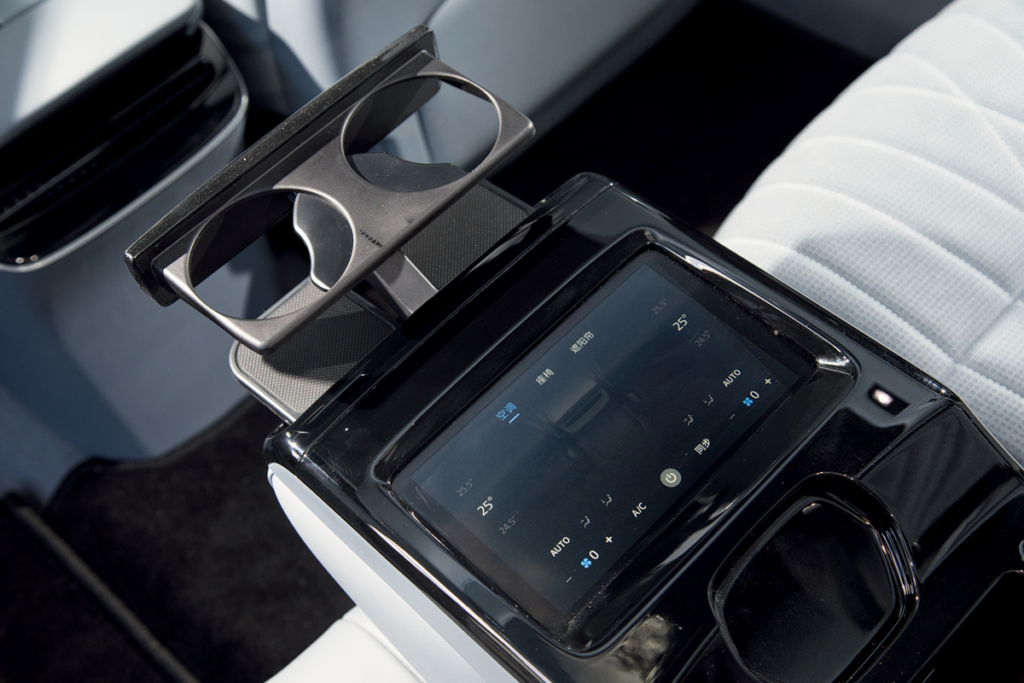
В откидном подлокотнике на заднем диване еще один планшет с настройками микроклимата – тут и обогрев, и вентиляция, и массаж! И не смотрите на иероглифы – на товарных машинах все уже на английском
Покупая Voyah Passion, прежде всего вы платите за его поразительный дизайн и передовую электрическую технологию. Под капотом находятся два синхронных электрических мотора с постоянными магнитами, обладающие совокупной мощностью 510 л.с. и надежным моментом 730 Нм. Для наглядности, это превосходит показатели крутящего момента бензинового двенадцатицилиндрового двигателя V12 в Ferrari 812 (который предлагает “всего” 718 Нм). Voyah Passion оборудован полным приводом, почти идеальным распределением веса и адаптивной пневматической подвеской. Наш испытательный седан оснащен базовым аккумулятором емкостью 82,1 кВтч, который обеспечивает официальный запас хода 483 км по европейскому циклу WLTP.
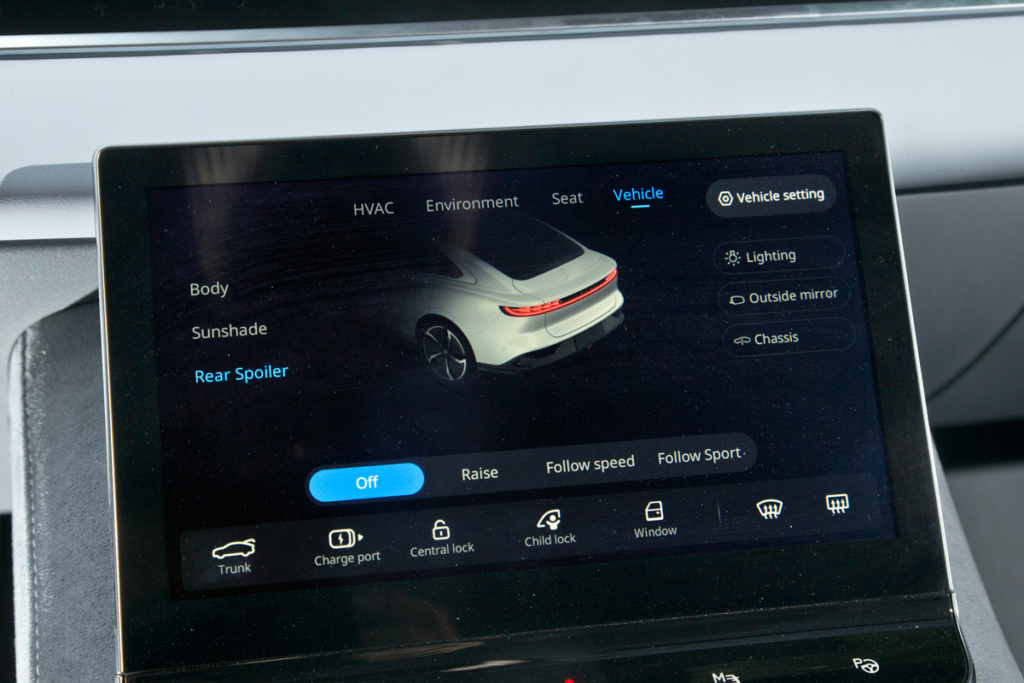
Через меню можно задавать различные сценарии работы заднего спойлера. Например, он может подниматься в режиме приветствия при отпирании машины
Когда мой коллега Андрей Мохов настраивает наше измерительное оборудование на автомобиле, я погружаюсь в меню настроек. К моему удивлению, вы можете настроить скорость поднятия и опускания заднего спойлера. Согласно заявлениям производителя, этот спойлер генерирует дополнительные 40 кг аэродинамической поддержки на задние колеса. Однако для оптимального разгона некоторые водители могут предпочесть оставить спойлер неактивированным. Я устанавливаю его в положение “Выключено” и отправляюсь на динамометровую трассу на испытательной площадке. В каждом акселерационном запуске Voyah Passion уверенно достигает 100 км/ч за 4,2-4,3 секунды, без необходимости запуска управления или двухпедального старта. Через всего 14 секунд на спидометре отображается 200 км/ч. Разгон действительно впечатляющий! Однако он длится недолго. Вмешивается электронный ограничитель, ограничивая скорость на спидометре до 208 км/ч. Хотя это значительное достижение, оно несколько уступает Tesla Model 3 Performance, которая может разгоняться до 260 км/ч (AR #15-16, 2022).
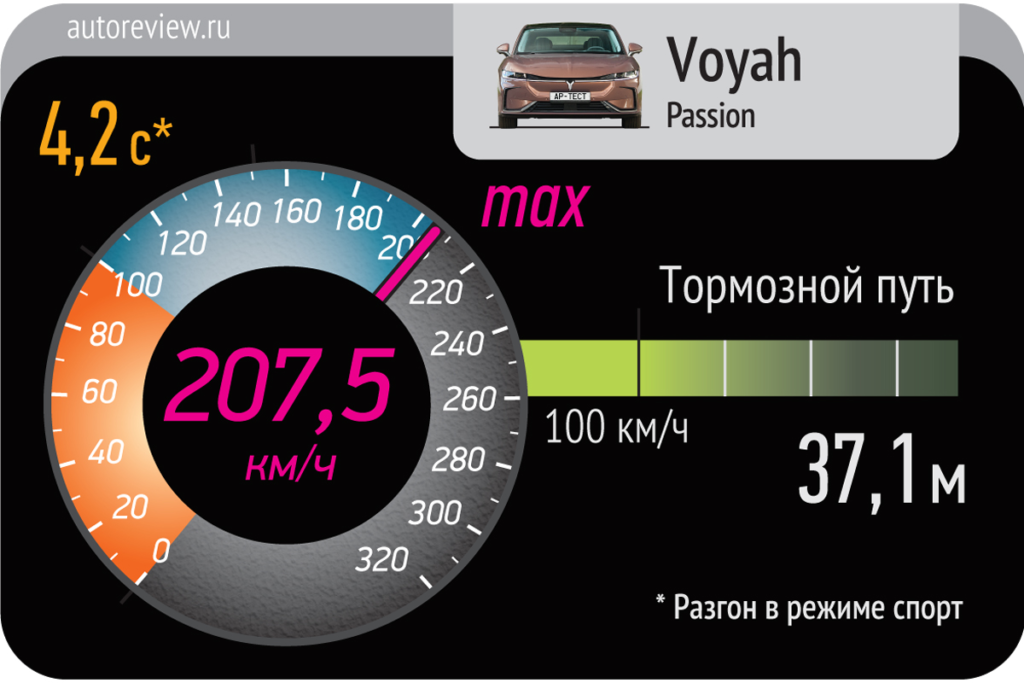
Интересно наблюдать, что мгновенные показания на электронном ваттметре во время разгона достигают впечатляющих 390 кВт, что эквивалентно мощным 530 л.с. Это превышает номинальную мощность на 15 кВт! Однако переход электроники управления от режима Sport к режиму Comfort (достигается касанием одного из сенсоров рядом с регулятором) заметно уменьшает производительность автомобиля. В режиме Comfort Voyah Passion для достижения 100 км/ч требуется как минимум 5,7 секунд. Как показывает ваттметр, электроника ограничивает мощность до 310 кВт (422 л.с.) в этом режиме.
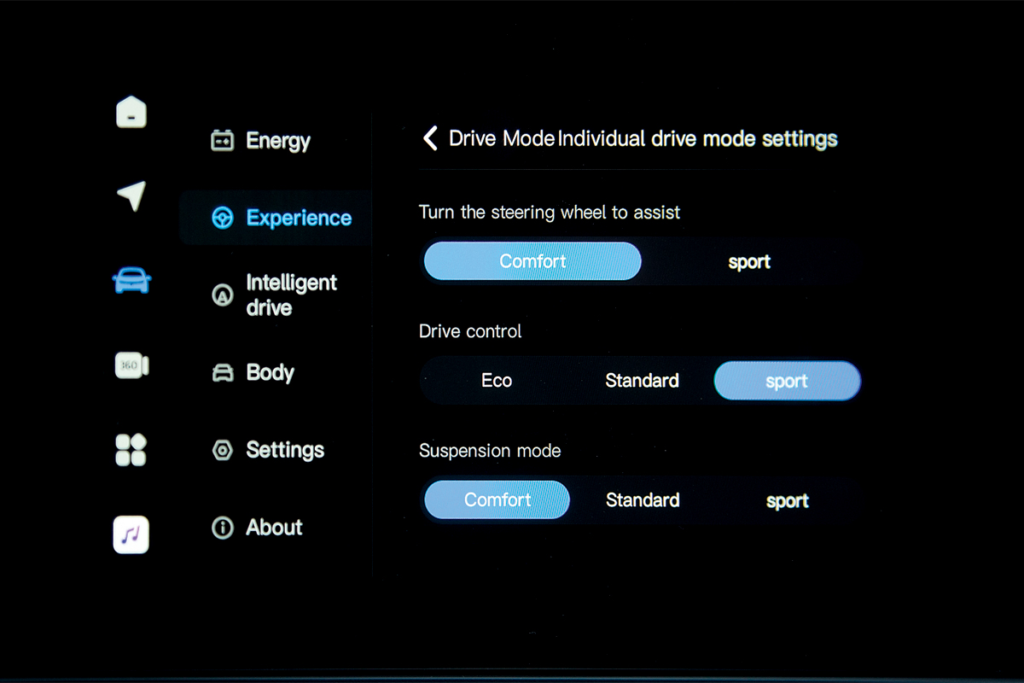
В режиме Individual можно выбрать максимальную отдачу силовой установки в сочетании с комфортными настройками подвески
В режиме Eco доступна скромная мощность 210 кВт (286 л.с.), независимо от того, насколько решительно вы нажимаете на педаль акселератора. Это ограничение кажется несколько странным, так как обычно у автомобилей полная мощность двигателя разрешена при использовании функции кикдауна, независимо от выбранного режима. Даже электрические автомобили обычно ограничивают мощность только в случае критически низкого заряда аккумулятора. В отличие от этого наш Voyah Passion все еще обладает зарядом аккумулятора на 80%. Поэтому, чтобы поразить пассажиров или других водителей реакцией как у ракеты, необходимо активировать режим Sport. В этом режиме жестко настраиваются и подвеска, и рулевое управление, хотя это может быть менее комфортно. К счастью, режим Individual предоставляет идеальное решение. Здесь вы можете настроить силовой агрегат в режим Sport, переключив подвеску и рулевое управление на комфортные настройки – идеальный баланс.

В арсенале седана 12 камер, 10 из которых снаружи. В перспективе компания обещает клиентам онлайн-обновление автопилота, который сейчас работает лишь как адаптивный круиз-контроль
Независимо от состояния, Voyah Passion точно следует за педалью акселератора, мгновенно реагируя без задержек. Управление скоростью в потоке движения приносит удовольствие, а также замедление. После испытаний всех трех режимов рекуперации я не обнаружил никаких шероховатостей. Проблем с эффективностью торможения или тепловой стабильностью не возникло. После испытаний остался лишь еле уловимый запах тормозных колодок – никакого дыма – частого явления во время испытаний корейских или японских автомобилей. Ясно, что вентилируемые диски установлены не только спереди, но и сзади, оснащены двупоршневыми суппортами спереди.
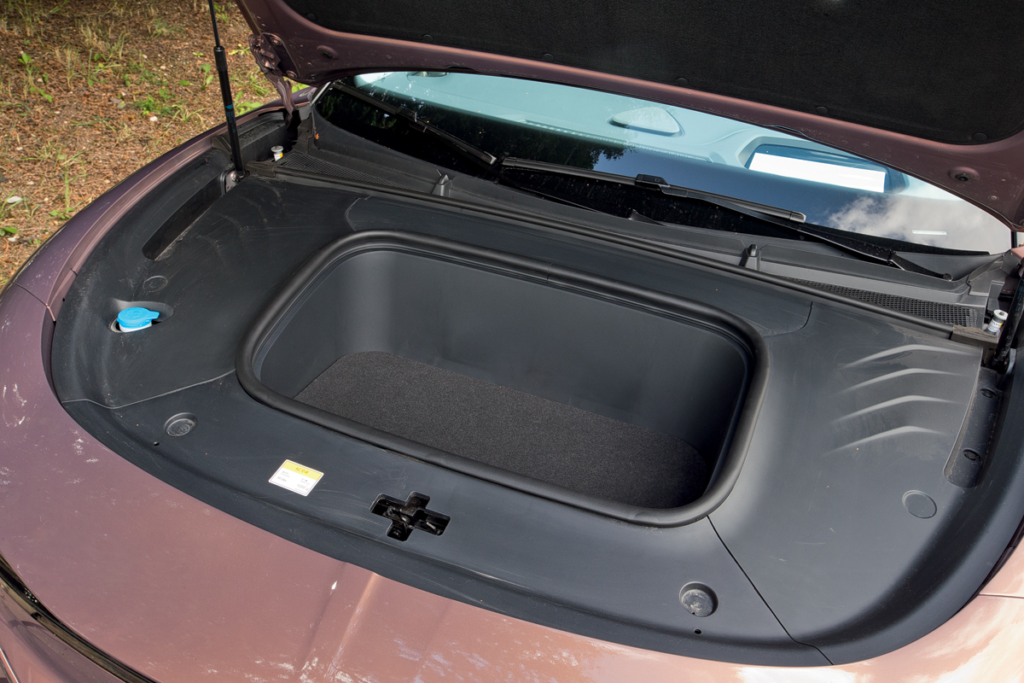
Спереди — дополнительный багажничек, в котором удобно возить зарядные кабели. Крышка оснащена газовыми упорами
Платформа, на которой создан седан Passion, такая же модульная ESSA (Electric Smart Secure Architecture), что и в моделях Free и Dreamer. Эта платформа предлагает пневматическую подвеску и адаптивные амортизаторы, которые регулируют жесткость в реальном времени на основе изображения дороги, полученного камерой, установленной под лобовым стеклом. Эта динамическая система подвески впечатляет, плавно преодолевая неровности асфальта и лежачие полицейские. Однако при встрече с более значительными ямами подвеска проявляет некоторые ограничения, и амортизаторы работают близ предела своих возможностей. Это ожидаемое поведение, так как ни одна пневматическая система не может полностью компенсировать низкопрофильные шины. У Passion установлены шины размером 245/45 R20, специально европейские Continental EcoContact 6, хотя и произведены в Китае.

Крышка заднего багажника с электроприводом, но активировать его можно лишь с ключа или дисплея на передней панели, наружной кнопки не предусмотрено
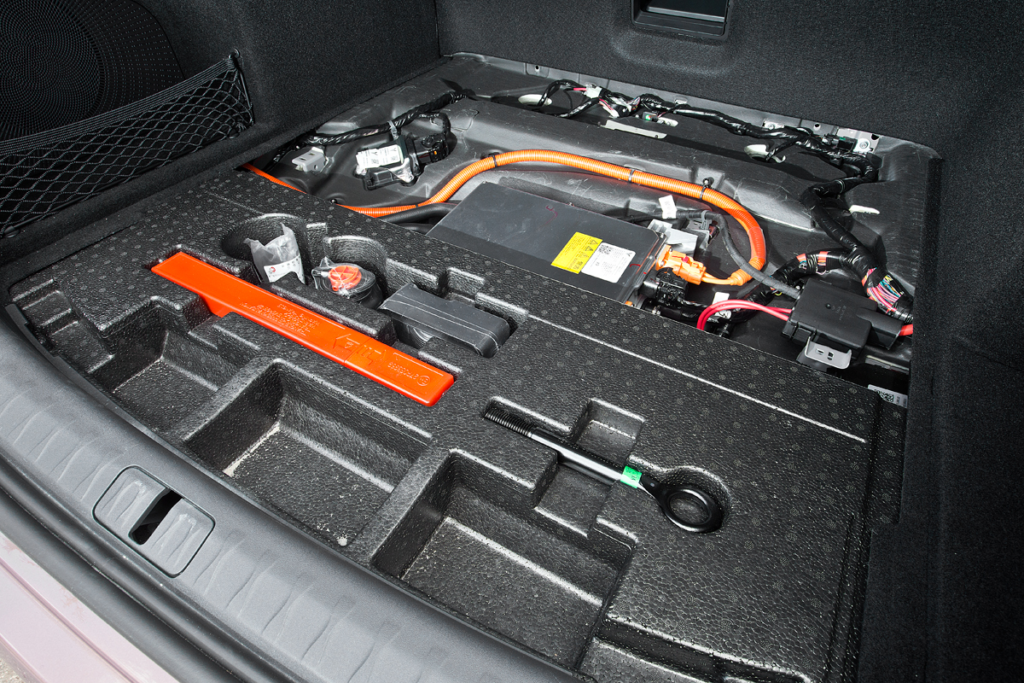
В подполье – ремкомплект с герметиком вместо запасного колеса
Тем не менее, регулируемая подвеска остается ценной особенностью. Например, если вам не нравится наклон кузова при движении в режиме Comfort на высоких скоростях, вы можете выбрать заранее установленные параметры, такие как Standard или Sport. В режиме Sport Voyah Passion уверенно справляется с поворотами, прочно прилипая к дороге, точно реагируя на ваши команды на руле, без излишней резкости. Кроме того, задний мост помогает поддерживать сцепление при изменяющихся условиях, обеспечивая приятное ощущение надежного “завинчивания” в повороте при отпускании педали газа. При разгоне шины успевают издать слабый визг вскоре до вмешательства системы стабилизации. Важно отметить, что отключение этой системы возможно только на скоростях до 80 км/ч. Более натуральное весовое усилие рулевого управления было бы отличным дополнением для использования на треке. Тем не менее, Voyah Passion остается тяжеловесом, вес которого составляет почти 2,3 тонны, даже в полностью оснащенном состоянии.
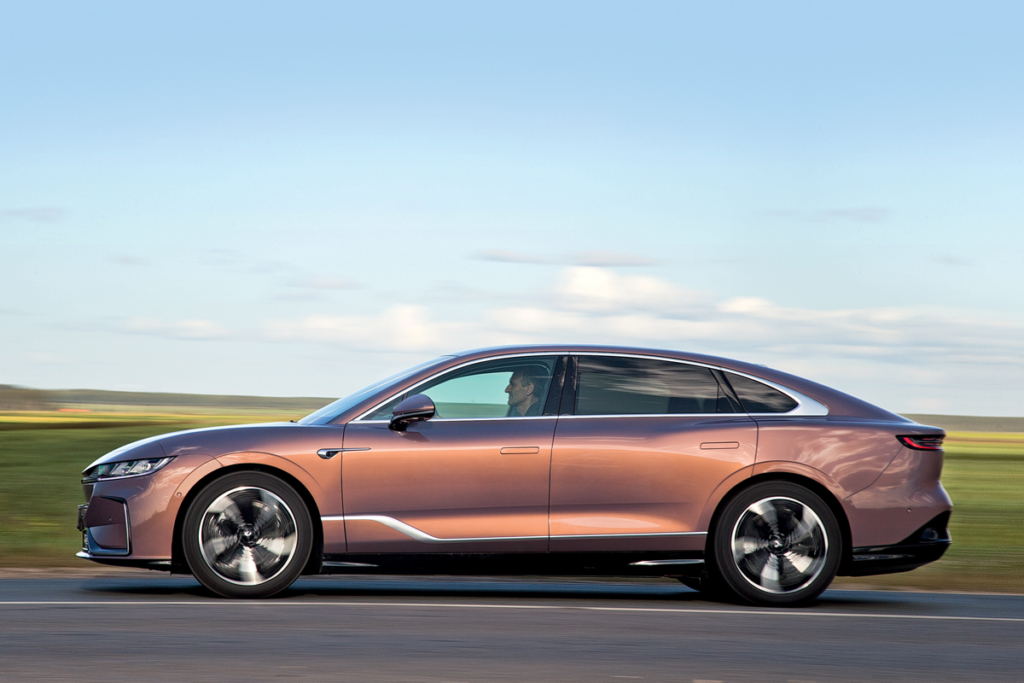
В режиме Sport кузов опускается на 16 мм, при движении по плохой дороге его можно приподнять на 56 мм, но только на скорости до 40 км/ч
Для ежедневного активного вождения этот автомобиль подходит превосходно, частично благодаря эффективной рекуперации энергии при торможении. Эффективность этого процесса отчетливо видна по впечатляющим показателям запаса хода. В городских условиях реальные запасы хода в диапазоне 350-380 км легко достижимы, с средним энергопотреблением около 21 кВтч на 100 км. Важно убедиться, что вы переключили счетчик оставшегося запаса хода из теоретического режима (на основе китайского цикла CLTC) в практический режим. В первом случае у Voyah Passion впечатляющий запас хода в 580 км на полностью заряженном аккумуляторе!
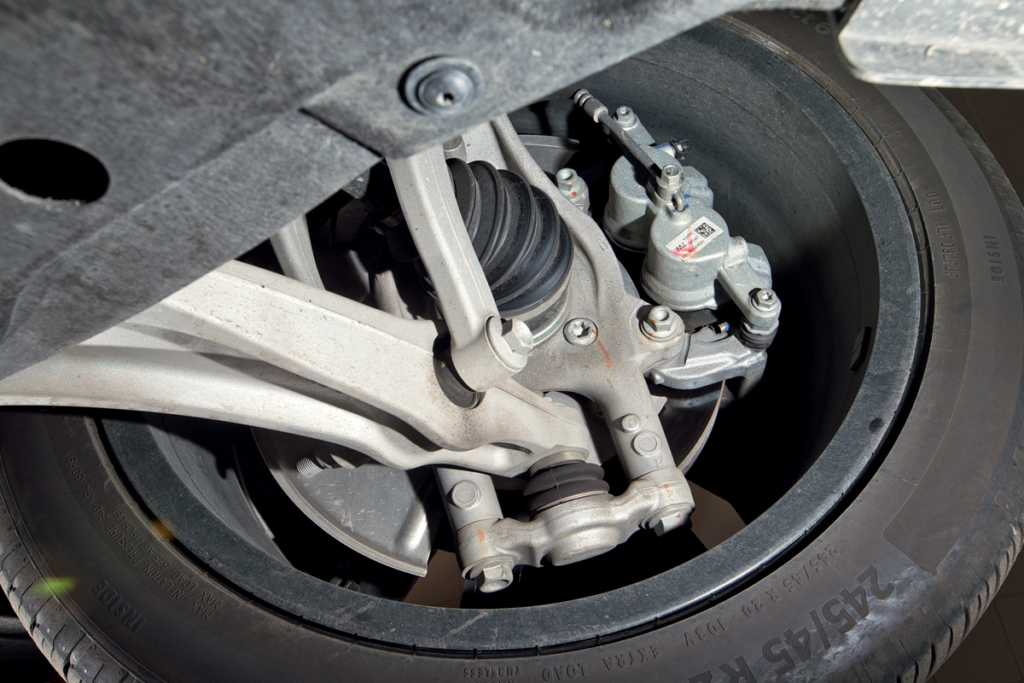
Передняя двухрычажка сплошь алюминиевая, с двухточечным креплением шаровых опор
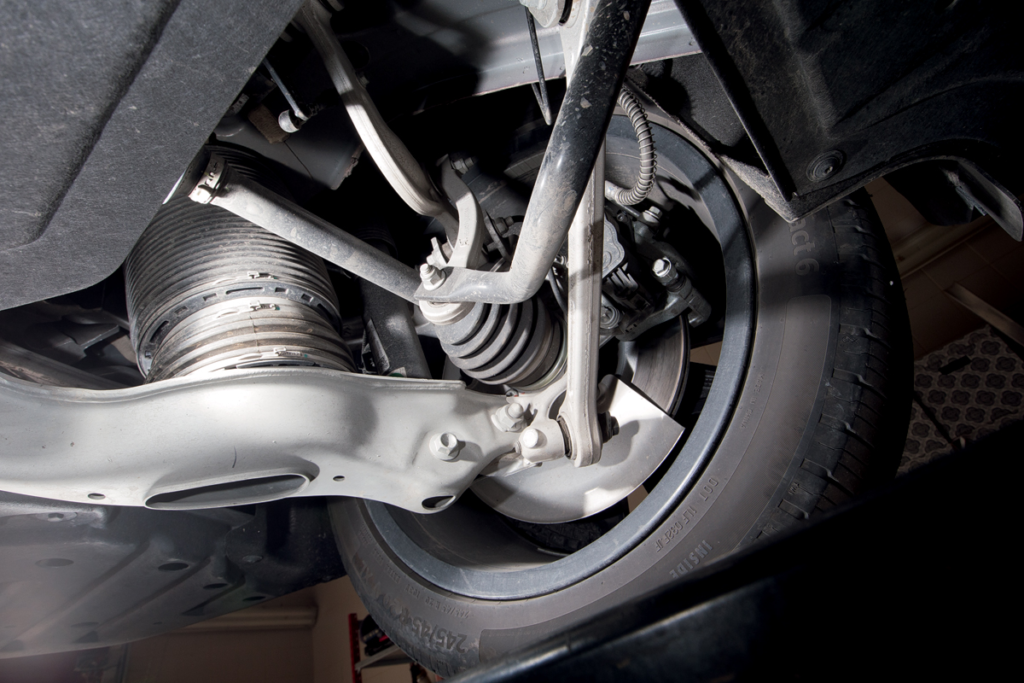
Сзади многорычажная подвеска с замысловатыми стойками стабилизатора
Что касается зарядки, процесс довольно стандартен. Для быстрой зарядки ищите станцию с китайским “GB/T пистолетом”. На испытательной площадке Дмитровского тестового трека была доступна такая станция, и Passion заряжалась с 20% до 100% примерно за полтора часа, с пиковой мощностью зарядки в 60 кВт. Мы также протестировали зарядку переменного тока на бесплатных станциях “Энергия Москвы”, которая работала без проблем. Этот метод использует все три фазы, с преобразователем на борту, оцененным на 11 кВт.

В заключение, заряжайтесь и наслаждайтесь поездкой! Voyah Passion обладает нечто уникальным, схожим с фруктом страсти. Интересно, что название этого фрукта со своей восхитительной мякотью и иногда неудобными семенами на английском языке также черпает вдохновение из слова “страсть”. В электрической машине Voyah Passion общее приятное впечатление незначительно портят несколько “семечек” в виде угловатого рулевого колеса и изобилия сенсоров. Тем не менее, основное внимание уделяется ее цене. Тестовая модель, стоимостью восемь с половиной миллионов рублей, не является вершиной. В России также доступна версия Voyah Passion Long Range, оснащенная более крупным аккумулятором на 108,7 кВтч и заявленным запасом хода 608 км согласно циклу WLTP. На практике можно ожидать запас хода от 450 до 500 км от одной зарядки. Однако модель Long Range имеет более высокую цену, составляющую 9,8 миллионов рублей. Ценообразование для гибридной Voyah Passion пока не определено, даже в Китае, где все еще ожидается начало продаж. Мы с нетерпением ждем этой информации, так как статистика показывает, что три четверти проданных здесь автомобилей марки Voyah – это гибриды.
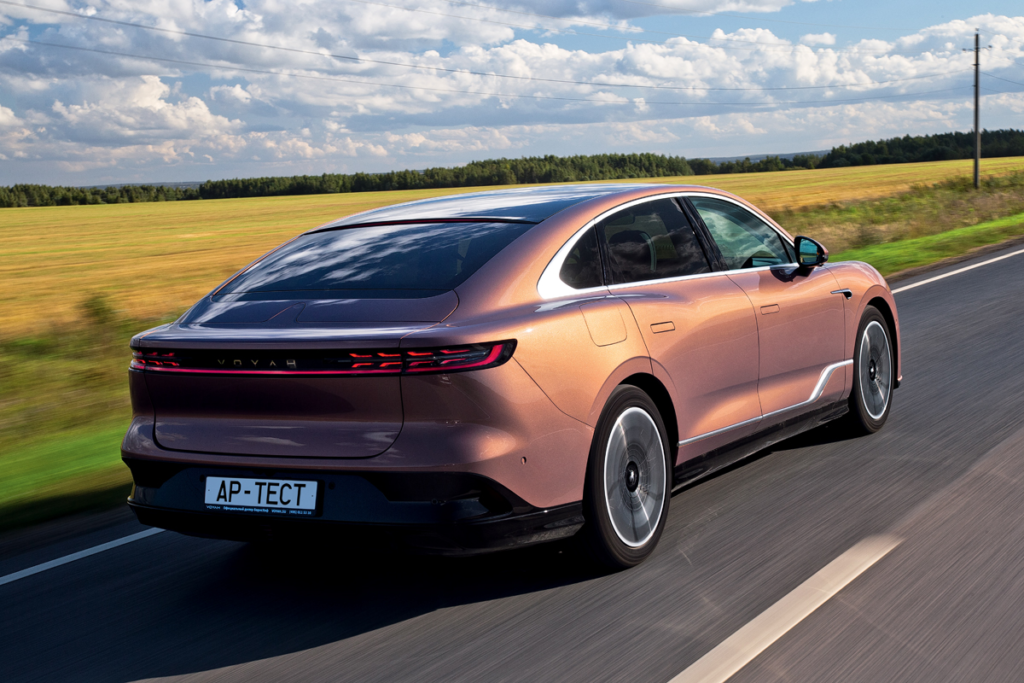
Выступ над задним стеклом — это полоска третьего стоп-сигнала на всю ширину

| Электромобиль | Voyah Passion |
|---|---|
| Тип кузова | Четырехдверный седан |
| Число мест | 5 |
| Снаряженная масса, кг | 2266 |
| Полная масса, кг | 2641 |
| Объем багажника переднего/заднего, л | 53/410 |
| Коэффициент аэродинамического сопротивления, Сx | 0.225 |
| Тяговый электромотор, передний Тип Расположение Макс. мощность, л.с./кВт Макс. крутящий момент, Нм | Синхронный, с постоянными магнитами Поперечно, над передней осью 217.5/160 310 |
| Тяговый электромотор, задний Тип Расположение Макс. мощность, л.с./кВт Макс. крутящий момент, Нм | Синхронный, с постоянными магнитами Поперечно, над задней осью 292.5/215 420 |
| Суммарная мощность электродвигателей, л.с./кВт | 510/375 |
| Суммарный крутящий момент, Нм | 730 |
| Тяговая батарея Тип Расположение Емкость батареи, кВт·ч Рабочее напряжение, В | Полутвердотельная, литий-ионная Под полом салона 82.1 400 |
| Привод | Полный |
| Передняя подвеска | Независимая, пневматическая, двухрычажная |
| Задняя подвеска | Независимая, пневматическая, многорычажная |
| Передние тормоза | Дисковые, вентилируемые |
| Задние тормоза | Дисковые, вентилируемые |
| Размерность шин | 245/45 R20 |
| Максимальная скорость, км/ч | 210* |
| Время разгона 0—100 км/ч, с | 3.8 |
| Запас хода по циклу WLTP, км | 483 |
| Время медленной зарядки переменным током 20—80%, часов⠀ | 5.2 |
| Время быстрой зарядки постоянным током 30—80%, минут⠀ | 27 |
*Ограничена электроникой
Фото: Дмитрий Питерский
Оригинальная статья на Авторевью: Страсть и маракуйя: смакуем Voyah Passion на полигоне

Опубликовано Декабрь 13, 2023 • 14м на чтение

